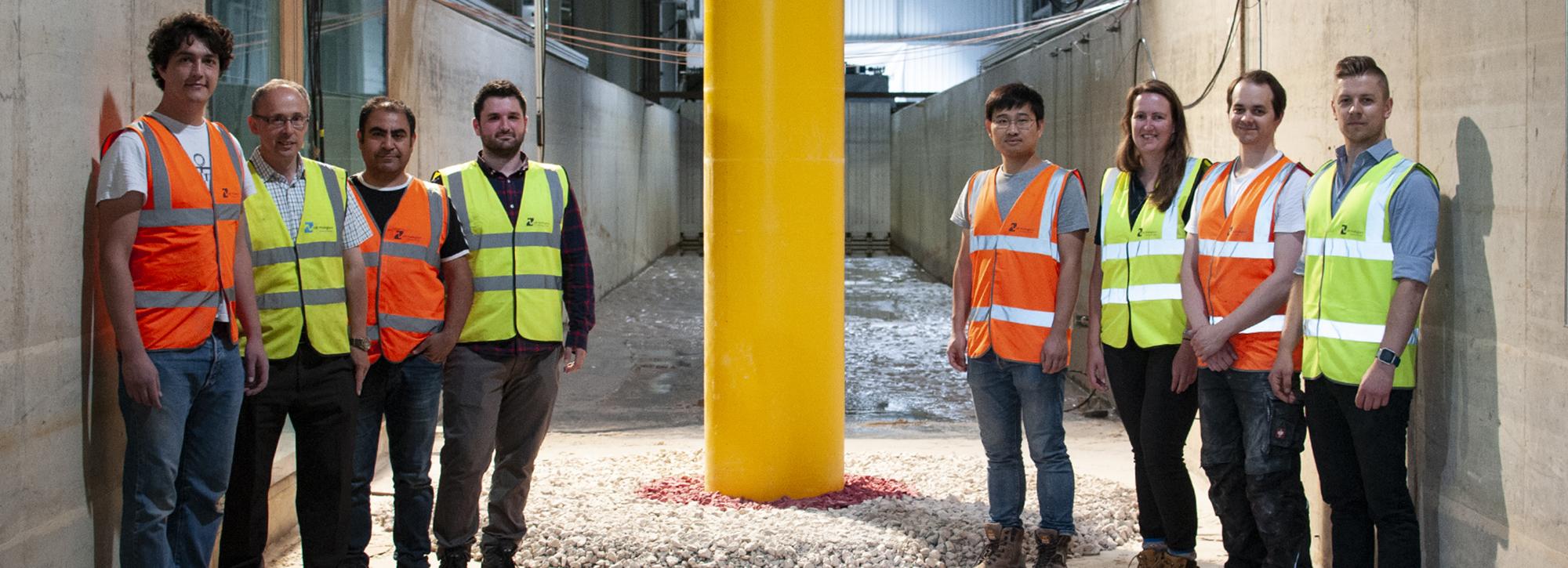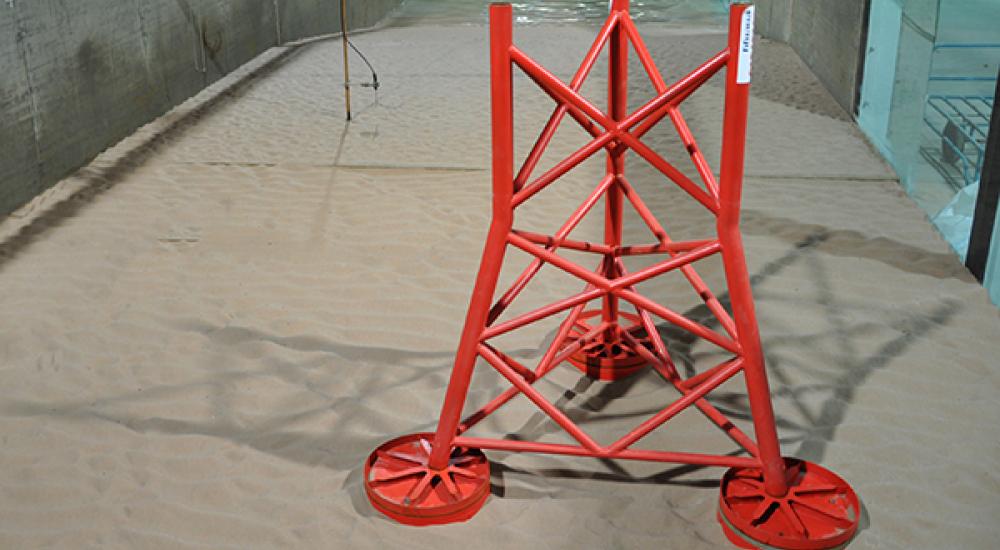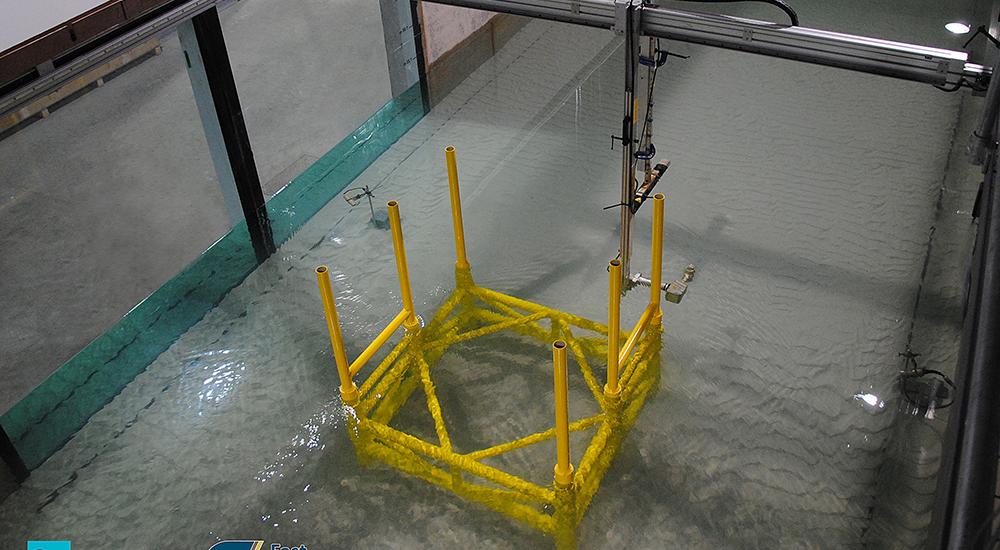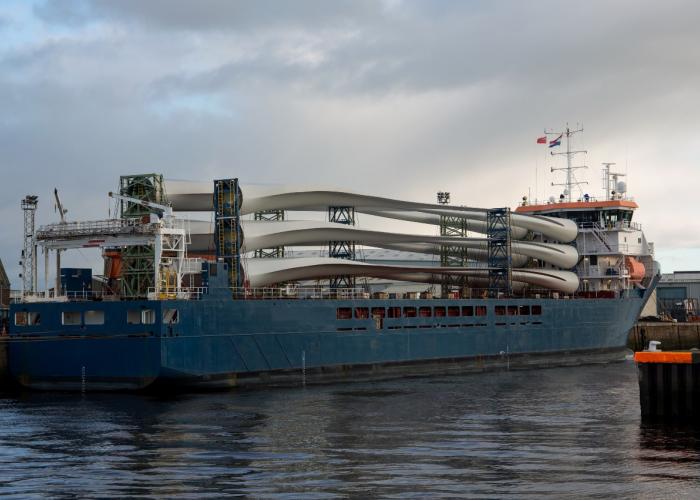
Foundation innovation for offshore wind
Our collaborative scour research programme is helping to develop more effective foundations for offshore wind farms.
Offshore wind turbines are often installed in areas where they are exposed to extreme waves and strong currents, so it’s critical that their foundations are stable. It is well known that the action of waves and currents can erode the seabed around wind turbine foundations. This phenomenon, known as scour, can destabilise the foundation and, in extreme cases, has the potential to cause structural failure. We’ve been working on collaborative scour research that will ultimately lead to more effective foundation solutions for offshore wind developments.
Suction bucket foundations
The Borkum Riffgrund 2 offshore wind farm in the German North Sea will have 56 8MW turbines, including 20 next-generation suction bucket foundations. Before these were deployed, HR Wallingford’s scour experts worked with Ørsted to help to refine the design of the suction bucket foundation, as part of a research project investigating scour effects and the most suitable scour protection for these novel foundation structures.
The ten-month study included physical modelling and analysis, looking into the types and extents of scour protection that would be required for the suction bucket foundation to be deployed in the North Sea. Tests also assessed the likely impacts of scour protection around the cables required to transport power from offshore wind turbines to onshore transformer stations.
For complex foundations, we currently use a combination of approaches to estimate likely scour, and this introduces a level of uncertainty in the design process. This research with Ørsted has enabled us to develop greater certainty in the prediction of seabed response, and design more efficient foundation solutions.

The testing has improved our knowledge of the scour and scour processes that occur at large, complex foundations. We are moving to the construction phase of Borkum Riffgrund 2 with rigorously tested scour protection designs, which increases our confidence in the performance of the scour protection.
PROTEUS
To design effective scour protection, engineers need to understand how wave and current forces interact with the foundation, the sea bed and scour protection. To date, most of the information available to designers has been derived from relatively small scale experimental tests, which answer the primary question about stability but may not produce transferable results with wider applications.
The best way to improve the industry’s knowledge is to evaluate the performance of different scour protection configurations under well controlled flow conditions at the largest possible scale to limit and understand any scale effects by comparing the new results to our existing database.
As part of PROTEUS, an EU-funded Hydralab+ project, scour researchers from Ghent University, HR Wallingford, Leibniz University Hannover and the University of Porto, alongside IMDC nv and the Department of Mobility and Public Works (Belgium), carried out large-scale physical modelling in our Fast Flow Facility. Their aim was to improve scour protection design around offshore wind monopile foundations, and to adapt designs for future climate change scenarios.
Our Fast Flow Facility, as one of the world’s largest marine test facilities, allowed scientists and engineers to examine hydrodynamic phenomena responsible for the destabilisation of foundations at a larger scale and in more detail than has previously been possible, helping to more effectively optimise designs while reducing scale effects.
Foundation costs represent 20 per cent of the total costs in the case of a monopile, a significant proportion of this figure is related to the foundation’s scour protection. This makes it vital to improve and reduce the cost of monopile scour protection design.
Scour at sub-station jackets
Offshore wind farms are getting bigger, and are increasingly being located further offshore in deeper waters, creating new challenges for their design, maintenance and operation. Key to their successful operation is the offshore substation, the gateway for the transport of energy to the mainland via undersea cables. As part of a research project with the University of Rostock, we have been assessing the development of scour around substation jacket foundations to provide new insights for the University of Rostock in research funded by the German government.
As the hub of an offshore wind farm’s energy export, connecting each individual wind turbine to the grid, the stability and integrity of the substation jacket and its cables is vital to successful windfarm operation. Failure or damage to the substation could mean lost transmission for the entire wind farm, with repair costs and loss of revenue running to tens of millions of Euros. Physical model tests allow for the effects of scour to be accurately assessed under realistic conditions in the laboratory, which can be used to inform and optimise jacket design.

For these scour tests, we have provided two models of steel jacket foundations at a scale of 1:60. The data we are gathering in HR Wallingford’s world-leading facilities is deepening our understanding of the effects of scour on offshore substation jackets in the German sector of the North Sea where substantial offshore wind development is both ongoing and being planned.
Research impact
Ultimately these projects will help to make offshore wind developments more cost-effective, and developments in exposed locations and deeper waters more economically viable.
Want to know more?

